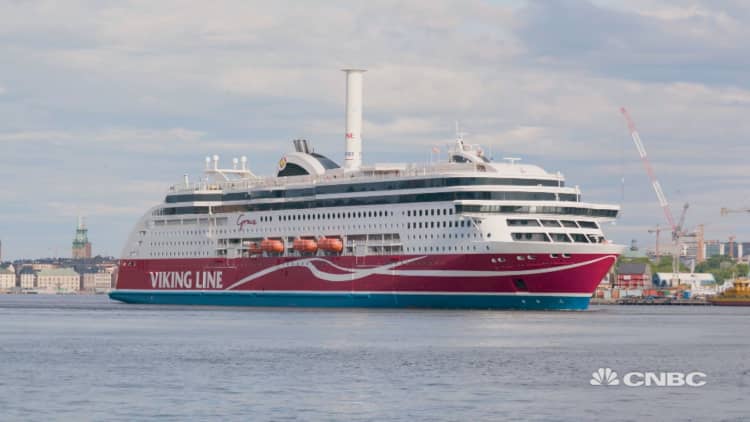
The shipping industry plays a crucial role in the running of the global economy and like any major sector, it has an environmental impact.
In 2012, international shipping was responsible for an estimated 796 million tons of carbon dioxide (CO2) emissions — around 2.2 percent of total global CO2 emissions that year, according to the International Maritime Organization.
In northern Europe, Finnish shipping business Viking Line is looking to mitigate its environmental footprint with innovative design.
“The Viking Grace is a passenger cruise ferry operating between Turku in Finland and Stockholm in Sweden,” Kaj Takolander, vice president and head of sales and marketing at Viking Line, told CNBC’s “Sustainable Energy.”
Takolander added that the ship was 218 meters long and carried a combination of passengers, cars and freight. He explained that the vessel was powered by four main engines built by Wartsila. “We use gas as the fuel, but we have a spare system for diesel in case of problems with gas supply,” he said, adding that each engine has more than 10,000 horsepower.
The Viking Grace is something of a trailblazer — the first passenger ship of its size to run on sulphur-free liquefied natural gas (LNG), according to Viking Line. “The benefit with LNG is that the emissions are up to 85 percent lower than with an ordinary, traditional diesel engine,” Takolander said. “The sulphur emissions are much lower.”
The ship also uses an innovative sail system, a 24-meter-tall cylindrical rotor sail developed by Norsepower Oy, another Finnish company. The sail uses something called the "Magnus effect" for propulsion, according to Viking Line. As the rotor spins, passing air flows with a lower pressure on one side compared to the other. This difference in pressure creates a propulsion force that moves the ship forward.
Altogether, these new innovations and ideas are helping to reduce the ship’s environmental impact. “Our decision to test this technology is based on… simulations that show that we can save up to 300 tons of fuel,” Takolander said, “meaning we can cut CO2 emissions (by)… 900 tons a year.”




